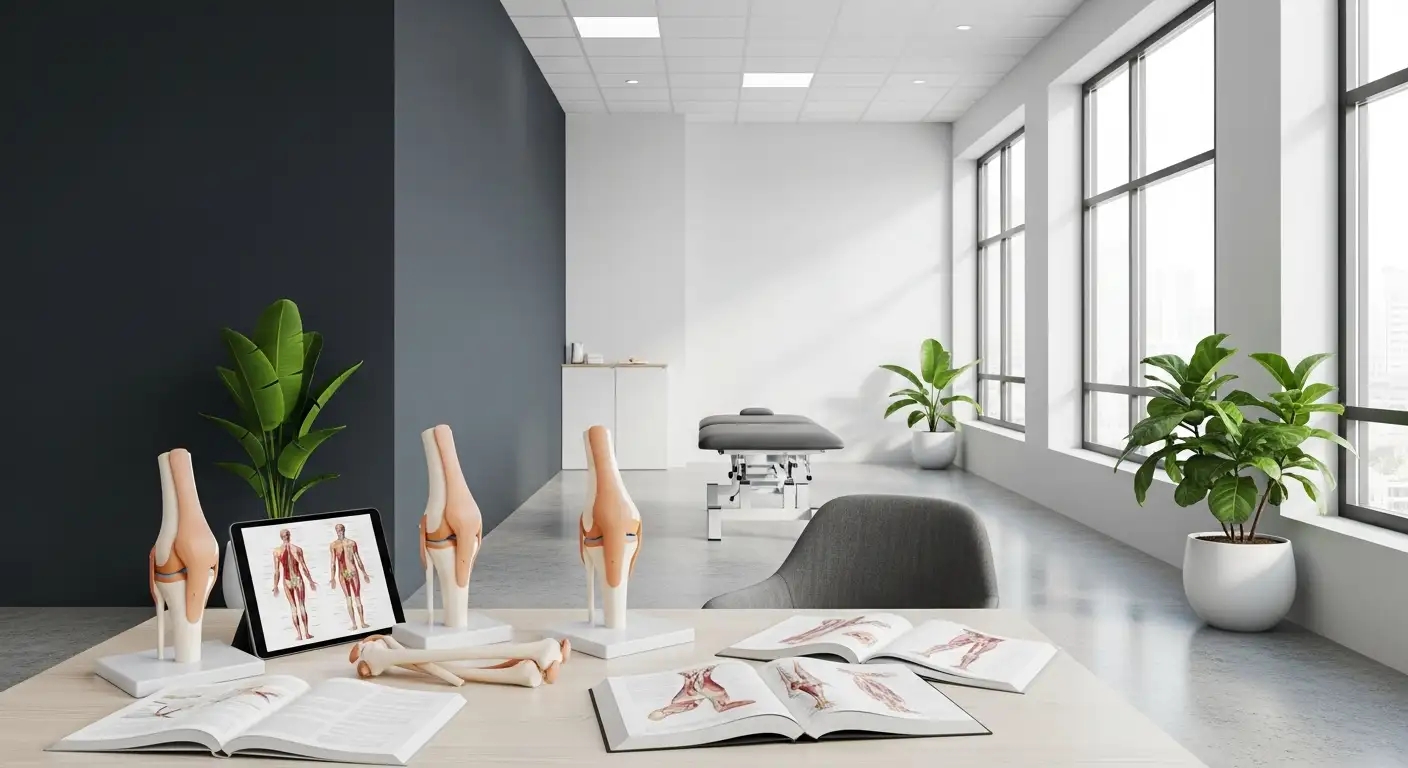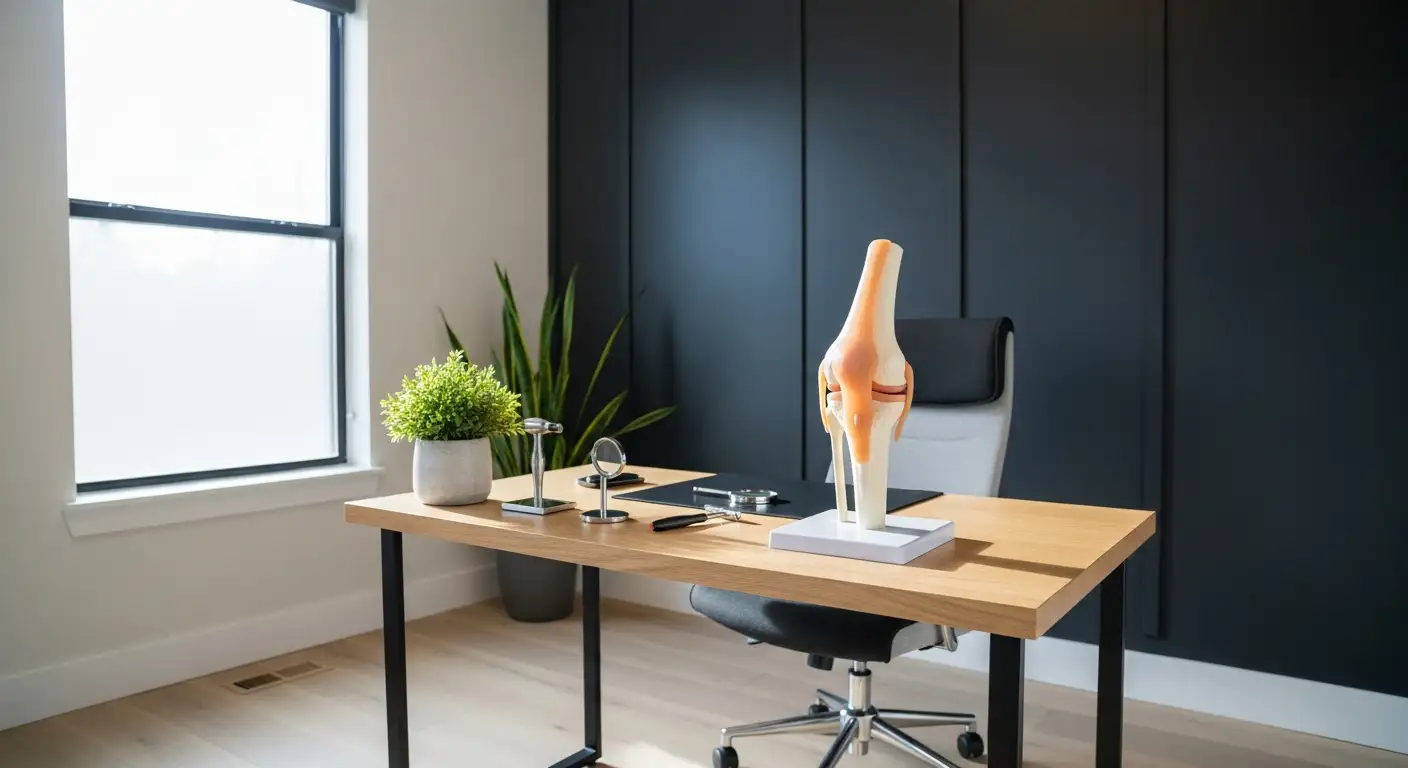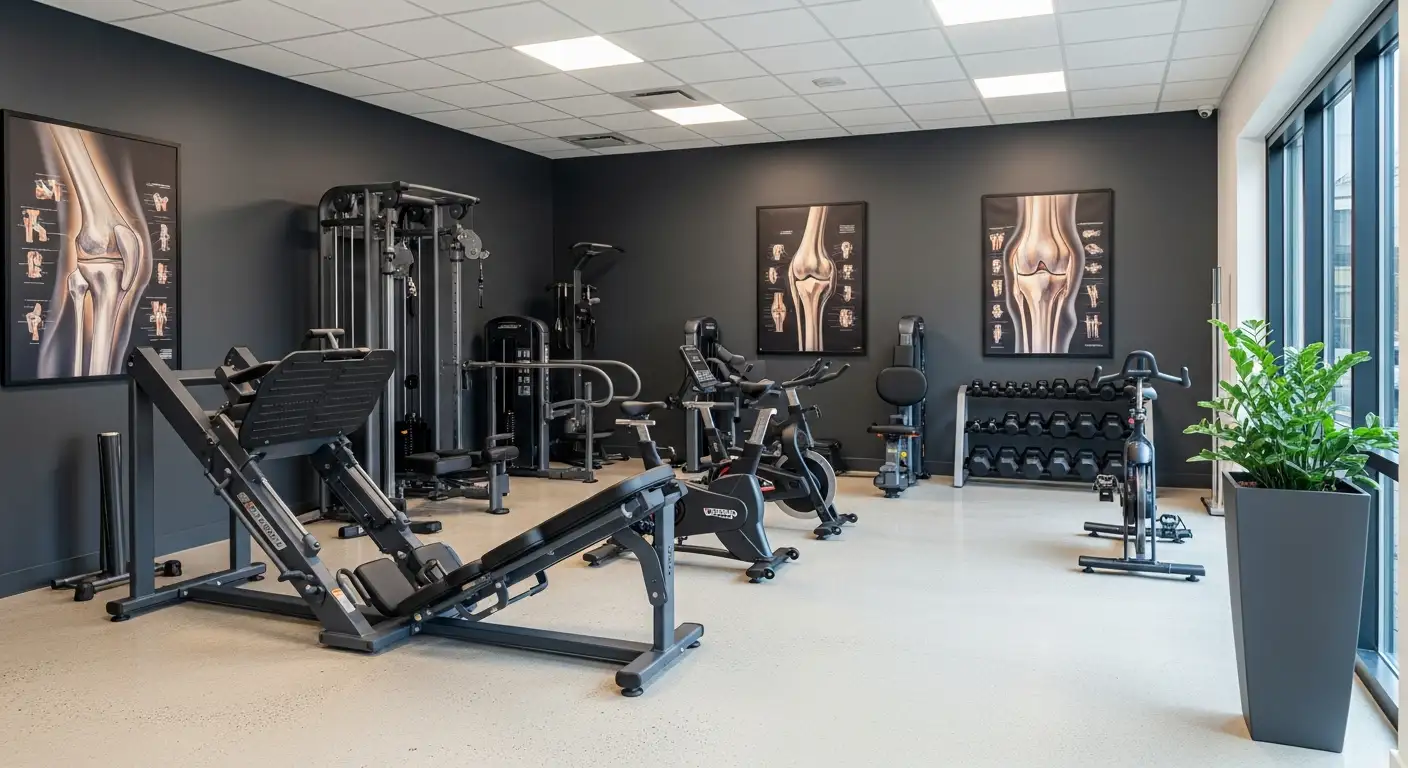Understanding Knee Pain from Squats
The act of squatting can lead to knee discomfort for various reasons. Whether you're an athlete or someone who incorporates squats into your daily fitness regimen, understanding the causes and symptoms of 'knee pain after squatting' can be beneficial in addressing the issue promptly and effectively.

Common Causes of Knee Pain
Over 25% of people who squat experience pain in the front of the knee, a condition known as anterior knee pain syndrome [1].
It's also worth noting that a study published in the Journal of Orthopaedic & Sports Physical Therapy in 2019 found that 40% of people who squatted experienced pain in one or both knees. This pain was most common in the anterior aspect of the knee, followed by the patellar region.
Interestingly, some evidence suggests that squatting may not be directly responsible for knee pain. Instead, other factors such as muscle imbalances, decreased flexibility, or inadequate muscle strength could contribute to the pain experienced after squatting.
Identifying Knee Pain Symptoms
Anterior knee pain syndrome typically presents as discomfort at the front of the knee and around the kneecap. Activities like squatting, running, or climbing stairs often exacerbate this pain.
The intensity of the pain can vary and could be accompanied by swelling, stiffness, or a decreased range of motion. If you experience persistent or severe knee pain after squatting, it's recommended to consult a healthcare professional for an accurate diagnosis and appropriate treatment plan.
In conclusion, knee pain from squats is a common issue that can stem from various factors. Understanding these causes and identifying the symptoms can help in managing the condition and preventing further pain or injury. Incorporating proper squat techniques, engaging in beneficial strengthening exercises, and consulting with professionals can also contribute to a pain-free squatting experience.
Medical Conditions Causing Knee Pain
While squatting is generally a safe exercise, incorrect form or pre-existing conditions can lead to knee pain. There are several medical conditions that can cause knee discomfort after squatting.
Patellofemoral Pain Syndrome
Patellofemoral Pain Syndrome (PFPS) is a common cause of discomfort in the knees after squatting. Over 25% of people who squat experience pain in the front of the knee, an ailment commonly known as anterior knee pain syndrome.
PFPS is characterized by pain at the front of the knee, around or just behind the kneecap, especially during activities that load the joint such as squatting. This pain can be exacerbated by activities like running or climbing stairs [1].
Osteoarthritis and Knee Pain
Osteoarthritis is another condition that could potentially cause knee pain after squatting. This degenerative joint disease can lead to the breakdown of cartilage in the knee, leading to inflammation and pain. Squatting, especially with heavy weights, might exacerbate the discomfort experienced by individuals suffering from osteoarthritis.
Meniscus Tears and Ligament Injuries
Meniscus tears and ligament injuries are other possible causes of knee pain after squatting. The meniscus is a piece of cartilage that provides a cushion between your femur (thigh bone) and tibia (shin bone). A tear in this cartilage can cause pain and instability in the knee.
Ligament injuries, particularly to the anterior cruciate ligament (ACL) and posterior cruciate ligament (PCL), can also cause discomfort during squats. These injuries often occur due to sudden changes in direction or speed, which can occur during certain types of squats.
These conditions are often diagnosed through imaging tests like X-rays, MRIs, or arthroscopy [1].
Understanding the potential medical conditions that can cause knee pain after squatting can help you better manage your symptoms and seek appropriate medical care if necessary. Always consult with a healthcare professional if you're experiencing persistent or severe knee pain.
Impact of Squatting Technique on Knees
The technique used while squatting can significantly impact the knees. When performed correctly, squats can strengthen the muscles surrounding the knees and improve overall joint health. However, incorrect squatting techniques can increase the strain on the knee joints and lead to pain or injury.
Importance of Correct Squat Form
Proper form when squatting is vital for reducing the risk of knee pain after squatting. Key elements of correct squat form include maintaining a neutral spine, ensuring proper knee alignment during the movement, and keeping a consistent bar path [1].
Incorrect squatting technique, such as excessive forward knee movement or poor alignment of the knees with the toes, can increase the strain on the knee joints, leading to pain or injury.

Maintaining proper squat form, such as ensuring the knees track over the toes, can alleviate knee pain during and after squatting [3].
The Role of Muscle Strength and Balance
Muscle strength and balance are important factors in maintaining proper squat form and preventing knee pain. Strong and balanced muscles provide stability to the knee joint and can help control the movement during a squat, reducing the risk of injury.
Adjusting foot angle and trying a wider stance can make squats more manageable for individuals with knee issues, as it can help reduce strain on certain muscle groups and joints. Experimenting with different foot angles and stances can help determine the best position for each individual.
In addition, changing the torso angle while squatting can shift the load towards the hips rather than the knees, potentially reducing the stress placed on the knees during the squatting movement. This adjustment can be particularly beneficial for individuals who experience knee pain after squatting.
In summary, maintaining proper squat form and ensuring muscle strength and balance are crucial for preventing knee pain from squats. By focusing on these factors, individuals can enjoy the benefits of squats while minimizing the risk of knee pain and injury.
Effective Pain Relief Strategies
If you experience knee pain after squatting, specific strategies can help alleviate discomfort and improve your squatting technique. Here are two key approaches: incorporating beneficial strengthening exercises and using the RICE method.
Beneficial Strengthening Exercises
Strengthening the surrounding muscles of the knee joint can help reduce knee pain after squatting by improving joint stability and function. Specifically, exercises that strengthen the quadriceps, hamstrings, glutes, and hip muscles are often recommended.
Proper form when squatting, especially ensuring correct knee alignment during the movement, can significantly reduce the risk of knee pain [1]. Adjustments to your squat form, such as modifying your foot angle or trying a wider stance, can make squats more manageable and reduce strain on particular muscle groups and joints.
Moreover, weakness in the quadriceps and hamstrings can contribute to knee discomfort after squatting. Therefore, incorporating focused exercises to strengthen these muscles may help alleviate knee pain and improve squat performance.
Additionally, mobility exercises such as foam rolling tight muscles and improving ankle mobility can address restrictions that contribute to knee pain during squats. Enhancing flexibility and mobility in key areas may help prevent or reduce knee pain post-squatting.
Using the RICE Method
The RICE method is a widely used approach to treat minor sports injuries, including knee pain after squatting. RICE stands for:
- Rest: Avoid activities that cause knee pain.
- Ice: Apply an ice pack to the affected area for 15-20 minutes at a time.
- Compression: Use an elastic bandage or brace to help reduce swelling.
- Elevation: Prop up the affected leg on a pillow or cushion to help reduce swelling.
This method can provide immediate relief from knee pain and promote healing. If your knee pain persists despite these measures, it's important to seek professional help to diagnose and address the underlying cause.
Preventing Knee Pain from Squats
Preventing knee pain after squatting involves several proactive measures that individuals can take to safeguard their knee health while performing squats. These include adequate warm-up and cool-down routines, wearing appropriate footwear, and making necessary adjustments in squat technique.
The Role of Warm-Up and Cool-Down
Proper warm-up and cool-down routines are essential in preventing knee pain after squatting. A good warm-up routine helps increase blood flow to the muscles, improve joint mobility, and prepare the body for the demands of squatting. It can include dynamic stretches and low-impact cardiovascular activities like cycling or brisk walking. Similarly, a cool-down routine, which may involve static stretches and relaxation exercises, helps the body recover and reduces the risk of knee discomfort post-workout.
Importance of Appropriate Footwear
The type of footwear one uses during squats can have a significant impact on knee health. Shoes with good cushioning and arch support help absorb impact and distribute forces evenly, providing stability and support to the feet and ankles. This, in turn, reduces the risk of knee pain. As such, it's recommended to invest in quality training shoes designed for weightlifting or cross-training exercises.
Adjustments in Squat Technique
Making adjustments in squat technique can play a significant role in preventing knee pain. Maintaining proper form, such as keeping the knees aligned with the toes and avoiding excessive forward knee movement, can alleviate knee discomfort during and after squatting. Furthermore, ensuring the spine is in a neutral position and maintaining a consistent bar path is crucial for optimal results [3].
Adjusting foot angle and trying a wider stance can also make squats more manageable for individuals with knee issues. This can help reduce strain on certain muscle groups and joints, and experimenting with different foot angles and stances can help determine the best position for each individual.
In conclusion, preventing knee pain from squats involves a combination of appropriate warm-up and cool-down routines, suitable footwear, and correct squat form. By incorporating these strategies into their workout regimen, individuals can enjoy the benefits of squats without the accompanying knee discomfort.
Professional Help for Knee Pain
Addressing knee pain after squatting effectively often requires professional help. Persistent knee pain can indicate a deeper issue that needs medical attention.
When to Consult a Healthcare Professional
It's crucial to listen to your body and understand when it's time to seek professional advice. Individuals experiencing persistent knee pain after squatting are advised to consult with healthcare providers or physical therapists. These professionals can assess the condition, determine the root cause of the pain, and develop an appropriate treatment plan to address the issue and prevent future problems.
Seeking professional advice is not just about treating the pain. Consulting with a coach or healthcare professional can provide personalized guidance in addressing the discomfort. Proper diagnosis, injury management, and tailored training modifications can aid in resolving the knee discomfort and prevent future issues.
It is essential to consult a doctor if the pain persists or worsens. Knee pain after squatting can be due to several factors, including poor posture, improper form, overuse, or an underlying health condition like arthritis or tendinitis [1].
The Role of Physical Therapy
Physical therapy plays a vital role in managing and preventing knee pain after squatting. Physical therapists are trained to identify and correct issues that may be contributing to knee pain. For example, they can provide guidance on improving squatting form, addressing muscle imbalances, and adjusting training intensity to prevent and manage knee pain.
A physical therapist can design a tailored exercise program to strengthen the muscles around the knee and improve flexibility and balance. This can not only help alleviate the current pain but also prevent future knee problems.
In some cases, physical therapy may be combined with other treatments, such as medication or surgery, to manage knee pain effectively. Always remember that professional help is invaluable in maintaining your health and fitness and overcoming the challenges of knee pain after squatting.
References
[1]: https://www.medicalnewstoday.com/articles/325246
[2]: https://www.hingehealth.com/resources/articles/knee-pain-when-squatting/





